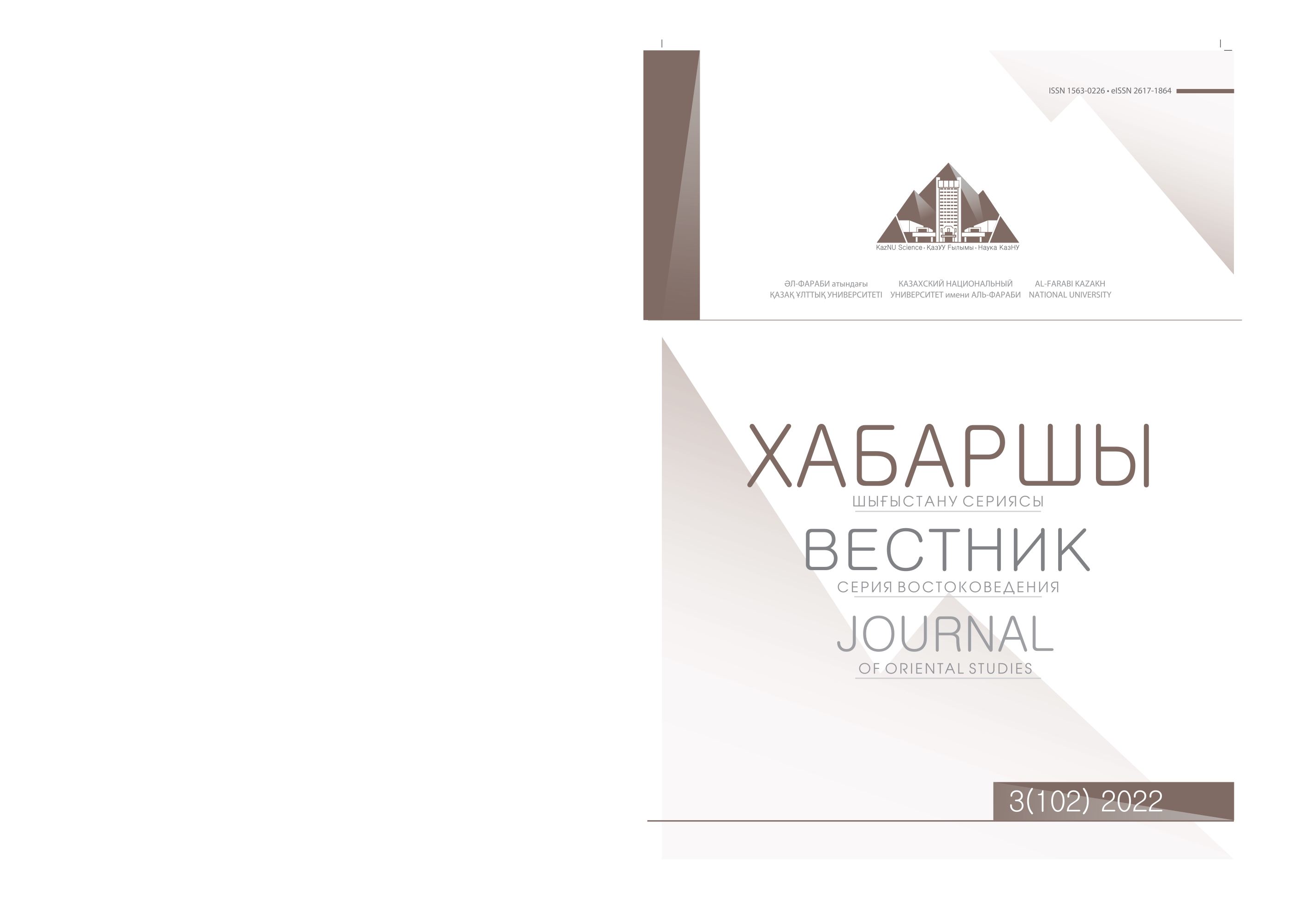Verbs and tenses in the Mamluk-Kipchak and Kazakh language
DOI:
https://doi.org/10.26577/JOS.2022.v102.i3.01Abstract
This article provides a comparison of typical properties of the principal features of the main
and auxiliary verbs and a study of the tense categories and moods of the historical Mamluk-Kipchak
language in comparison with the modern Kazakh language considering such well-known written
sources in the Mamluk-Kipchak language of XIIІ-XV centuries as “Kitab al-Idrak Li-Lisan Al-
Atrak”, “Kitab majmua tirjuman turki ua ajami ua muguli ua farsi”, “Kitab ad-durra al-mudiyya fi
al-luga”, At-turkiya ala at-tamam ua al-kamal” and “Al-Qawanin al-kulliya lidabt al-lugat at-
turkiya”. In this regard, descriptions of the mentioned written sources were given first, and a brief
overview of special and general studies on the study of the historical Mamluk-Kipchak language is
also provided.
The comparative study showed that the main verbs and auxiliary verbs in the Mamluk-
Kipchak language and the modern Kazakh language have structural and semantic similarities, as
well grammatical similarity in terms of tense and mood. The definition of the process of lexical and
grammatical continuity between the historical Mamluk-Kipchak language and the modern Kazakh
language, which is the basis of the article, has particular importance from the point of view of
studying the historical development of the Kazakh language.
Key words: Mamluk-Kipchak language, manuscript, Kazakh language, verb, tense category




